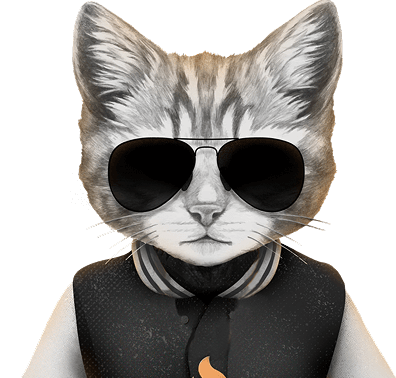
Brands now face a real choice: work with AI-generated avatars that deliver perfect on-brand visuals in minutes or stick with human creators who bring lived experience and spontaneous interaction. Each path carries clear upsides and real risks. We pulled engagement rates, cost ranges, and audience reactions from HypeAuditor to give marketers an objective side-by-side view. The goal is not to pick winners but to show when an AI influencer fits the brief, when a human voice matters more, and how to balance both without losing credibility or budget.
AI influencers and human influencers offer two very different value propositions: one gives you control and consistency, the other brings trust and emotional depth. This article compares both across key areas like engagement, cost, credibility, and creative flexibility. If you're wondering which one is better for your campaign, the answer depends on what you're trying to achieve and who you're trying to reach.
Among millions of influencers, most probably you’ve already come across an AI influencer account at least once. You may not have noticed it at first since most of them look very real. After all, a closer inspection would lead you to realize that they are not humans, but they are AI-generated characters with usually hyper-curated content.
The presence of AI in digital marketing, especially influencer marketing, is no longer limited to tools that assist influencer campaigns — it can also be the influencer. Considering the value of the influencer marketing industry stood at $24 billion, it’s quite interesting to see that the global AI influencer market alone was projected to reach $6.95 billion in 2024. That means AI influencers are contributing almost 29% of the industry’s total value. A report by KBV Research even projects that the virtual influencer market will reach $37.8 billion by 2030.
This development points out that AI influencers are no longer just a futuristic concept; they are actively shaping brand marketing today. Nevertheless, their existence sparks mixed feelings among audiences and brands alike: some welcome this innovation, while others question its authenticity. Yet, the ultimate question remains: Will AI influencers ever replace human influencers?
Let’s explore further by comparing AI and human influencers, understanding who does better at certain aspects, and analyzing how brands should decide when to use AI or human influencers for their campaigns.
Key takeaways:
AI influencers contribute nearly 29% of the total value in influencer marketing.
AI influencers offer full creative control, consistency, and 24/7 availability. Human influencers bring emotional depth, cultural context, and real trust.
AI creators often drive curiosity and reach, but struggle with authenticity and long-term connection.
Some AI influencers outperform human creators in metrics and audience quality; and in other cases, it’s the reverse.
Brands are more likely to face backlash when AI involvement isn’t disclosed or misaligned with their values.
The choice depends on your brand’s audience, campaign goals, and how much risk you're willing to carry.
AI Influencers & Human Influencers: What's the Difference?
It’s not hard to define what human influencers are. They come in flesh and blood, sharing experiences and opinions, but usually have a large group of followers. They manage their own accounts and interact with their audience through personal content and real-life interactions. Their personality, niche, and expertise make them trusted figures for recommendations, which usually tends to lead to brand conversions.
Meanwhile, AI influencers are lifelike virtual personalities created using AI algorithms, CGI, and machine learning. These accounts are usually run by brands, agencies, or companies to keep their identity in control and ensure consistent messaging. For example, Lil Miquela was a project by a tech startup named Brud in 2016. Since then, she has become an internet sensation to the point she was among Time’s 25 Most Influential People on the Internet in 2018, alongside famous celebrities like Rihanna and BTS.
While human influencers live their lives like any other person, AI influencers follow certain prepared storylines, much like movie characters. To create twists, companies sometimes create artificial drama and design relationships between AI influencers and real people. Although AI influencers offer unique storytelling opportunities, human influencers still create stronger emotional appeal and trust. This is because real people build their following by sharing authentic personal stories, emotions, and opinions. For brands,the question of whether AI or human influencers should be used therefore depends on their campaign goals. Understanding these differences is important for making the right decisions.
Comparing AI and Human Influencers
In September 2024, we conducted a survey of 620 Instagram influencers about their thoughts on AI. The results were interesting: 42% of the respondents believe that AI-generated influencers will gain popularity in the near future. With their unique appeal, AI influencers are becoming an alternative for brands in creating suitable campaigns for their audience.
To learn further about the strengths and weaknesses of each influencer type including which is better for specific campaigns, let’s compare them in some important factors.
Authenticity
Humans, with their genuine emotions, can create authentic content; even in sponsored posts. Their expertise, delivery style, and deep understanding of their audience allow them to create content that is perceived as trustworthy by consumers.
On the other hand, AI influencers' content is mostly pre-programmed and carefully curated. Even if it creates an illusion of authenticity through storytelling, it still can’t match the level of spontaneity and emotional depth that human influencers naturally express in their everyday lives. This is why AI influencers may not be a very good fit for brands relying on emotional connection and relatability to keep the audience tuned in.
This concern is reflected in the July 2024 Influencer Marketing Report by Influencer Marketing Hub, which shows that 36.7% of marketers worry about a lack of authenticity of AI-powered influencers, and 19% are concerned about potential customer mistrust. Fully AI-created influencers may heighten these concerns, especially when such influencers visibly differ from real humans.
That said, authenticity can still be achieved through AI influencer partnerships; as long as brands put strategic considerations. Some brands have successfully collaborated with AI influencers. For instance, Amazon Prime Video launched a campaign using AI influencers and managed to present strong authenticity. In 2022, Prime Video partnered with Kyra, India’s first virtual influencer, and Luks, the metaverse avatar of popular Brazilian content creator Lucas Rangel, to promote their new show, The Peripheral.
This partnership received positive audience feedback, most likely because the show’s theme naturally fit in with AI influencers. The Peripheral is set in a future where people remotely operate human-like drones, making the collaboration both relevant and authentic to the campaign’s messaging.
From that example, it is important for brands to ensure that their products or services align with the nature of AI-driven content, so AI influencer partnerships feel authentic. Since this approach doesn’t work for all brands, human influencers remain in a better position when it comes to securing partnerships deals focused on raw, à la human authenticity.
Scalability
In the comparison between AI influencers and human influencers, scalability refers to the efficiency of an influencer in creating content, expanding their presence, and reaching audiences without limitations.
In this regard, human influencers are restricted by personal time, energy, availability, and sometimes unexpected events that may prevent them from posting or interacting with the audience 24/7. Moreover, humans experience burnout and fatigue, which can impact content output and engagement levels. They also have their own identity and reputation, which limits the degree of brands control, since brands have to respect boundaries. Often, collaborating with human influencers often requires complex negotiations and contracts, which can make the process more challenging
That is why 31.7% of brands cited ‘more control over messaging’ as the major benefit of AI influencers, while another 29.1% believe 24/7 availability is their biggest strength over human influencers. This perspective is understandable since AI influencers can function continuously, be active on multiple platforms at the same time, and are unaffected by emotions, relationships, or personal constraints.
Furthermore, global partnerships pose another challenge for human influencers. They must adjust schedules, coordinate across time zones, and even travel when necessary; let’s not forget language barriers. On the other hand, AI influencers don’t have these obstacles. Their content can easily be translated, repurposed, and scaled across multiple platforms, languages, and regions with very little effort.
However, scalability doesn’t guarantee sustainability. According to our 2022 observations, 28% of AI influencers had stopped posting on their social media despite their initial popularity — and after reviewing the data again in 2025, the results remain the same. Some examples include Bermuda and Blawko, two AI influencers who used to be portrayed as the close friends of Lil Miquela.
Emotional Connection
Human influencers, with their rich emotions, can express a wide range of reactions from laughing and crying to anger and joy. These emotions make them naturally engaging, which often lead to closeness and relatability with their followers. Consequently, the emotional connections they establish result in higher levels of trust and stronger brand relationships.
But what about AI influencers? Can’t they replicate emotions too? Yes, they can simulate emotional responses, but the interactions remain scripted. In fact, people might initially find their aesthetic and newness interesting, but after that, they may struggle to form and maintain deep connections in the long-term.
Another plus point of human influencers is the spontaneous moments that naturally occur in their lives. Everything, even the most unexpected moments or simple gestures caught on camera have a unique charm that draws organic followers. This is definitely something AI simply cannot replicate.
A research study by Twicsy, which analyzed earnings per post and engagement rates based on data from HypeAuditor, reveals that sponsored posts by human influencers significantly outperform those by AI influencers. On average, human influencers’ posts receive 187,039 likes and 2,049 comments per post, compared to 86,786 likes and 1,953 comments per post for AI influencers. This means human influencers get 266% more engagement than AI influencers’.
Creativity
For artificial influencers, creativity comes from their creative team. They show it using AI-generated art, deepfake technology, and highly futuristic designs that bring a new approach to the industry. However, their creativity is completely programmed, which results in a lack of spontaneity and originality that are typically found in human influencers.
Instead, human influencers are able to bring unique perspectives in connecting a brands’ products or services with the latest trends, which makes them even more relatable to audiences. This makes the innovation of human content more limitless and created based on their own personal experiences and cultural insights.
But, the importance of creativity is subjective and varies with brands. A survey of over 500 marketing professionals showed that 42.6% consider the ability to customize or control an AI influencer’s behavior and content output as 'very important,' while 33.5% see it as 'extremely important.' This suggests that for marketers, alignment with brand messaging by AI influencers is more valuable than being creative. In this case, AI influencers’ creativity may not be a necessarily valued trait as long as they can become whatever a brand needs. This contrasts with human influencers, whose value comes from their originality and creativity.
Cost Efficiency
When calculating costs, AI and human influencers come with different needs that brands should consider carefully. Twicsy’s study discovered that human influencers earn 46 times more than AI influencers per post, with an average income of $78,777 compared to $1,694. This shows that partnering with human influencers is much more costly than working with AI influencers.
AI influencers require a high upfront investment, but this cost is usually borne by the company that creates them — unless a brand develops its own AI generated persona. While initial setup costs are comparably high, AI influencers have lower long-term maintenance costs. Over time, they don’t require salaries, per-project fees, or travel expenses. Since AI influencers don’t change public opinions or are very unlikely to engage in scandals, brands can avoid costly PR crises and damage control efforts.
In contrast, the cost of human influencers are much higher because of several factors. Their fees vary based on the account type, engagement rate, platform popularity, and other factors. They also need extra costs, including travel, styling, and production expenses, especially when brands need custom content for a certain campaign. Brands also have to bear in mind that human influencers are more prone to controversies, changes in preferences, and PR risks. If an influencer becomes involved in a scandal or controversy, brands might have to terminate contracts, shift campaigns or implement crisis management strategies, which add unexpected costs.
So, it’s clear that AI influencers can be cost-effective for long-term branding, whereas human influencers have better ROI with their high-impact and viral but short-term campaigns.
Brand Trust
Partnering with human influencers can be seen as traditional since the popularity of AI influencers rises. For this reason, human influencer partnership is no longer a foreign thing, which also means that collaborating with human influencers is generally perceived as more trustworthy and credible. The only possible risk in this aspect is that their personal actions can directly affect a brand’s reputation; even negatively.
As AI influencers gain traction, an important question comes up: Can a digital persona truly recommend a product? This skepticism is especially common among audiences who see them as too fake or unnatural. According to a study, 19% of marketers worry that using digital personas could lead to consumer mistrust.
Actually, brand trust can still be established as long as AI influencers are used strategically in industries that naturally align with digital innovation, such as fashion, gaming, technology, and entertainment. For example, technology and AI are aligned together and go hand in hand, which makes the collaboration feel natural.
Meanwhile, brands in sensitive industries like healthcare, financial services, and non-profit organizations should be cautious about using AI influencers without enough consideration and sensible urgency. Those mentioned brands’ campaigns need real-life experience and real human senses, which can’t be achieved through AI influencer marketing.
Ethical Considerations
Using AI in marketing strategy always raises ethical concerns, and AI influencers are no exception. Since they are still a new concept and unfamiliar to many, brands and marketers are still reluctant in creating collaborations with them. At least 43.8% of marketing professionals are concerned about the ethical implications of AI influencers.
The biggest concern is still about authenticity. Many people don’t immediately realize these influencers are not real humans. When they find out that endorsements come from AI instead of actual people, they may feel misled or uncomfortable in some ways. This creates hesitation among brands, especially those unprepared for potential backlash.
Sealing partnerships with humans isn’t completely free from ethical concerns either. The most common issue is undisclosed sponsorships, where influencers don’t clearly label paid promotions. Yet, staying transparent and honest to consumers is important to avoid consumer manipulation. However, this issue is generally easier to manage and regulate compared to the more complex ethical challenges that come with AI influencers.
AI Influencer vs. Human Influencer Accounts Direct Comparison
To get a closer look at the comparison, let’s analyze some human influencers’ and AI influencers’ accounts head-to-head. Here, we use HypeAuditor’s Look Alike feature to find human influencers on Instagram with the same account type and similar categories. We’ll be looking at some metrics such as engagement rate, audience type, and Audience Quality Score (AQS).
Lil Miquela vs. Nailea Devora
 Lil Miquela is arguably one of the most famous AI personalities on the internet. Her popularity has gained her 2.4 million followers on Instagram, placing her in the mega-influencer tier. Miquela still actively posts, mainly focusing on fashion trends and adult modeling. While her posts generate engagement, it’s not significant, with less than 0.01% on average. This low engagement is partly due to her hidden like counts, which prevent an accurate calculation of her overall engagement.
Lil Miquela is arguably one of the most famous AI personalities on the internet. Her popularity has gained her 2.4 million followers on Instagram, placing her in the mega-influencer tier. Miquela still actively posts, mainly focusing on fashion trends and adult modeling. While her posts generate engagement, it’s not significant, with less than 0.01% on average. This low engagement is partly due to her hidden like counts, which prevent an accurate calculation of her overall engagement.
Based on our AQS calculator, her score is only 57, which falls within the average range but could be improved. One reason for this is anomalies detected in her follower chart. Her audience consists of 57.5% real people and 3.7% influencers, but also consists of 22.0% suspicious accounts, and 16.8% mass followers. These suspicious accounts may be bots or real people using automation services to artificially boost the number of likes and comments. Meanwhile, mass followers are accounts with more than 1,500 followings, which make them unlikely to see an influencer’s posts.
With this follower composition and only 61% quality audience and low authentic engagement per post, brands should set realistic expectations before partnering with Miquela.
Now, let’s compare Miquela’s account with a human influencer who’s in the same tier.
 Nailea Devora is an internet personality known for her influence in fashion and lifestyle. She has worked with renowned brands such as Saint Laurent, Marc Jacobs, and Miu Miu. Her Instagram handle is now followed by approximately 4.5M people with an excellent engagement rate at 6.04%, analyzed from her like and comment counts.
Nailea Devora is an internet personality known for her influence in fashion and lifestyle. She has worked with renowned brands such as Saint Laurent, Marc Jacobs, and Miu Miu. Her Instagram handle is now followed by approximately 4.5M people with an excellent engagement rate at 6.04%, analyzed from her like and comment counts.
Her AQS shows 79 which concluded from good likes and comments activity as well as a high percentage of real audience. Breaking down her audience, 75.4% of them are real people, 12.0% are suspicious accounts, 9.3% mass followers, and 3.3% influencers.
According to our report, Nailea’s follower growth appears organic, with no signs of incentivized following patterns. This is different from Miquela’s growth, which shows mass following and follow-unfollow patterns from over a year ago, which indicates inauthenticity of her audience.
Like Miquela, Nailea doesn’t post frequently, averaging just one post per week. However, the difference is significant. While Miquela’s posts rarely exceed 100 comments, Nailea’s typically receive between 150 and 400 comments. This could be attributed to the authenticity of Nailea’s content as a human with vibrant life, rather than AI’s simulated life that lacks human experiences.
Rozy vs. Yuiko Miyagawa
 In the mid-tier, we have Rozy, Korea’s first AI influencer. She has a hyper-realistic appearance and is known for her collaborations with major brands such as Coach and American Tourister. Rozy is an example of an AI influencer who has successfully maintained authenticity and grew trust among her followers.
In the mid-tier, we have Rozy, Korea’s first AI influencer. She has a hyper-realistic appearance and is known for her collaborations with major brands such as Coach and American Tourister. Rozy is an example of an AI influencer who has successfully maintained authenticity and grew trust among her followers.
Her AQS is 70 with 69% quality audience, proving that she has gained traction through her posts and collaborations. Our data shows that the majority of her followers are real people at 63.5%. However, 23.9% are mass followers, which may limit Rozy’s engagement potential since mass followers usually follow random accounts hoping for a follow-back. This type of audience lacks genuine connection with the influencer and may unfollow her at any time.
Rozy’s yearly growth is 8.01%, with a 13.1k increase in followers last year. However, this massive growth shows signs of inauthentic audience activity, mainly due to the high number of mass followers. On the positive side, Rozy performs exceptionally well in categories such as Women’s Fashion, Beauty, and Luxury Fashion.
Furthermore, her sentiment analysis results are outstanding, with 95.06% of the audience showing positive reactions, 4.94% neutral, and 0% negative sentiment. This strong positive sentiment could increase her chance for collaborating with brands looking for AI influencers with high audience approval.
Now, how does a human influencer in the same tier compare?
 Meet Yuiko Miyagawa, a Tokyo-based influencer who frequently shares aesthetic posts featuring skincare, accessories, and personal recommendations.
Meet Yuiko Miyagawa, a Tokyo-based influencer who frequently shares aesthetic posts featuring skincare, accessories, and personal recommendations.
Yuiko’s quality audience score is 76%, yet her AQS is only 58, meaning she is average but has room for improvement. While she has high likes activity and great quality of active audience, her followers aren’t highly engaged in comments; some of her posts even receive no comments at all. Compared to Rozy, this result proves that audience connection isn’t solely about whether the influencer is human or AI, but also depends on the way they deliver content and how it resonates with the audience.
Yuiko’s audience is 65.5% real people, while the remaining 34.5% consists of influencers, mass followers, and suspicious accounts in nearly equal distribution. Based on our report, her following dynamics appear organic, which means people follow Yuiko out of genuine interest in her content. That’s why, although they may not engage much in comments like Rozy’s followers, they are likely engaging in other ways, such as liking posts or checking out her recommendations, which will lead to brand conversions.
When Should Brands Use AI or Human Influencers?
To answer whether brands should use AI or human influencers, it actually depends on their needs and goals. It is important to carefully consider why you are partnering with an AI persona and give your audience a compelling reason for doing so. Simply wanting to attract a Gen-Z audience is not enough. It is also essential to analyze the success of previous virtual influencer campaigns before choosing to collaborate with one.
Brands can learn from past failed collaborations between companies and AI influencers. For example, when PacSun chose Lil Miquela as their spokesperson. They aimed to strengthen their digital presence, but the fact that PacSun used an AI entity as a store spokesperson raised skepticism among customers, who expected the role to be filled by a real person.
Once brands determine whether AI influencers align with their products or services, the final consideration should be campaign goals. Here’s our recommendation for each goal:
Brand consistency and control: To minimize risk of controversy or inconsistent messaging, choose AI influencers.
Emotional storytelling & engagement: To build deeper connections with audiences, choose human influencers.
Promoting technology and innovation: To enhance a futuristic look and digital appeal, brands can use AI influencers. However, if established expertise is also needed, human influencers might be the better choice. Both options are relatively safe for this goal.
Luxury and high-fashion: To present a visually pleasing aesthetic with curated results, brands may prefer AI influencers.
Always-on marketing: If brands need to expand campaigns across time zones, platforms, and in multiple languages within a short time, AI influencers are the best fit.
Viral trends & relatability: To create buzz, social engagement, and potentially viral content, human influencers are the better option.
What This Means for Marketers
With AI influencer no longer just a concept, marketers are now considering whether it’s best to continue trusting human influencers or experiment with AI collaborations. To make this work for you, start with these:
Match your talent to objectives so you can consider where and when to use AI or human influencers.
AI influencers are still relatively new for some people. Before investing in large campaigns, run small tests to understand how your specific audience reacts, especially if authenticity is key to your brand.
Run a cost-impact test. Compare CPM, engagement quality, and sentiment across one AI and one human campaign before scaling spend.
Pair a virtual creator for functional content (product specs, FAQs) with humans for lifestyle and behind-the-scenes posts to cover both credibility and efficiency.
While human influencers are able to build connections through their content, AI influencers offer cost efficiency and brand consistency. Human influencers are irreplaceable in trust-based marketing and audience loyalty, while AI influencers excel at delivering futuristic digital content that captures attention.
Choosing the right influencers, either human or AI, is complex and often requires a case-by-case approach which needs thorough judgment. After examining several factors, we believe that the rise of AI influencers doesn’t mean the end of human influencers. Instead, they can complement each other and create a possible new trend: hybrid influencer marketing.













